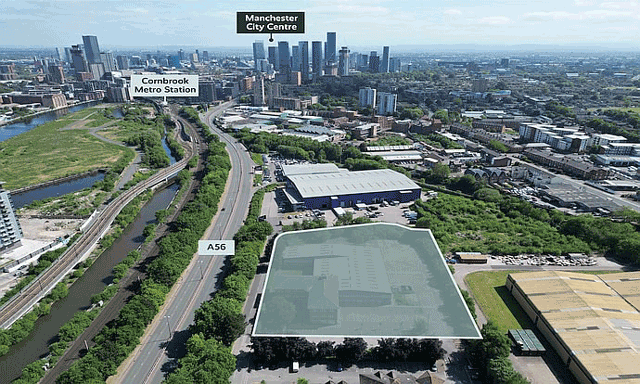After a week packed with results, Estates Gazette spoke to bosses from REITs Great Portland Estates (GPE), Helical and British Land, about the strategies which shaped their year, from partnering with equity partners to prudent risk-taking.
“What we learned about REITs is, you either need to be very big with a very low-cost base or you need to do a lot. We’re opting for the ‘do a lot’ model,” said James Moss, Helical’s new chief financial officer.
Moss pointed to fellow REIT LondonMetric, which reported its tenth consecutive year of dividend growth last week, as a good example of the former, with a logistics-driven portfolio valued at £6.2bn compared to Helical’s, at £535.4m.
Matthew Bonning-Snook, the company’s chief executive, however, pointed to the company’s swing back into a profit of £27.9m, from a loss of £189.8m the year before, as evidence that the company’s approach was working. He said the company had taken the “decisive action” necessary to put it back on the right track, having cut overheads by 25% while also putting greater emphasis on its equity-light investments.
“We’ve gone out and told people we’re doing great market-defining deals, transactions with optionality within a joint venture to go and make lots of other equity deals.” Bonning-Snook said, adding that even off of “a very small capital base you can make a material difference to performance.”
This includes the company’s £333m joint forward sale of 100 New Bridge Street with Orion Capital Managers to owner-occupying bank State Street, what Bonning-Snook calls “one of the most important deals in the last six-to-nine months, if not longer”.
State Street beat Lego in a hotly contested process, with both looking to make the 195,000 sq ft building their next London HQ. “We had two occupiers basically fighting it out at the end,” Bonning-Snook said: “One [State Street] ultimately wanted to buy it, one [Lego] wanted to lease it, but we had very acceptable terms from Lego wanting to lease the whole building on a long-term lease with a £4bn covenant.”
This was a fortuitous dilemma to face, Bonning-Snook said, which exemplified the “value of going quickly and getting into development and really building to the supply shortage”.
Predicted to hit 7.6m sq ft over the next five years, according to a report by Knight Frank, the shortfall in EPC-compliant office space means rents for high-quality space are rising. Bonning-Snook, however, said that that simply relying on a rise in passive income is not enough, where a foray into office development can reap rewards, if done right. “Not being active doesn’t help,” he said. “Just collecting rent is not going to satisfy shareholders. You have to be out there making a difference.”
The might of equity-light
British Land’s chief executive Simon Carter struck an optimistic note about his company’s equity-light strategy too, even while predicting “broadly flat” earnings for the year to come. He took a longer-term view to the upcoming delivery of developments, such as the 750,000 sq ft 2 Finsbury Avenue, EC2, which he said would boost earnings to around 6% in 2027, with average earnings projected to continue at 3-6% annually after that.
“We want to do more of that [development] and take advantage of this [office shortfall] window. So, we will probably bring forward more development, but often do it with partners because that’s efficient from a balance sheet perspective,” he explained.
Plus, he said, it brings in development manager fees and enables the firm to take advantage of more opportunities through an agile and equity-light approach.
“It’s something that British Land has done for a long time” he said, listing off the REIT’s partners: “We’ve got GIC, Royal London, some of the biggest sovereign wealth funds. I think we’re in a good place to continue to benefit from that.”
Earlier this year the firm sold half of its stake in 2 Finsbury Avenue to Abu Dhabi-based investment company Modon Holdings and received cash proceeds of £100m while retaining a 25% interest.
With rents on the rise, Carter said the outlook for investment was improving, as investors look to capitalise on lucrative opportunities for passive income: “Investors are far more confident on the outlook for offices, so we’re beginning to see deals increase, we saw seven deals over £110m in the first quarter of 2025 across London, whereas there were only 10 for the whole of 2022.
“I think that will continue to grow. Our developments should deliver about £100m of development profit a year, so we would expect, if values continue to increase, that existing stock, and particularly the developments, continue to drive that.”
Carter did, however, hint at a rejigging of the portfolio to place more emphasis on the firm’s retail portfolio after it recorded strong growth of 7.1%, eclipsing the REIT’s campus portfolio’s bounce-back to growth of 0.8% in the latter half of the year.
“We’re a third retail parks today. I think that will continue to go up and you’ll probably see, within our office business, maybe a little less standing investments and a bit more on the development side.”
Built to demand
The REIT’s diversified portfolio allowed it to bear the brunt of the office market downturn of recent years and to make some riskier bets, which Carter said are starting to pay off. Despite an overall 0.8% fall in valuation over the year for British Land’s campuses, he expected the company would continue to see a bounce back – and not just in the traditional core markets, as occupiers look farther afield in pursuit of value.
“They’re looking at some of the emerging locations now and those emerging markets were very quiet for the last two to three years,” he said. “But they’re just coming to life, which is good given we just delivered our first building [Dock Shed] at Canada Water. We’re seeing increased viewings and negotiations there, [with] higher education, government and engineering businesses for their head office incubator space. It’s anyone who wants a great office with great transport connectivity but is saying, ‘Look, we don’t want to pay £100 rents’.”
Indeed, government regulator Ofcom recently launched its search for a new headquarters, with South London named as one of its three focus areas, with other locations Canary Wharf and Stratford.
A headline-grabbing commitment in from a big occupier is, however, still to come from Canada Water, so, while Carter may say things are looking up for the emerging market, it remains to be seen whether British Land’s bet will pay off.
What the market needs
Fellow REIT GPE has been on a winning streak with its office developments, as well as its push out into fully-managed offices. Chief executive of the REIT Toby Courtauld said the trick was delivering “exactly what the market needs” and pleasing investors, who gave the firm £350m to deploy as they called the bottom of the office market a year ago.
“We essentially said, ‘Here we go again, this is what we do very well…” he said, explaining that the company was buying land and assets at a 53% discount to what it calls their ‘replacement costs’ – the amount it would cost to build the assets again.
“That’s a very important measure of the ability and opportunity to make money from these sorts of things. We’ve done it before and here we go again. So, big tick there,” he said.
And, he added, it’s paying off in other measures too: “We’ve got a nice tailwind pushing us along and something like 40% of our assets are technically in production. So we’re refurbishing or building ground-up into that supply drop, which is why our rents are rising.”
Total rent roll was up by 15% to £123m, according to the company’s results last week, with rental values in prime offices up by 7.6% and 12.8% in its fully-managed offices compared to the company’s average of 5% across its portfolio.
Last week it announced the 62,500 sq ft prelet of its asset at 30 Duke Street, SW1, by investment firm Clayton, Dubilier & Rice on a 15-year lease, with rents agreed “ahead of March 2025 ERV”.
According to Savills’ Central London Office Quarterly report, average prime rents for the West End stood at £156 per sq ft at the end of Q1.
Earlier in the year GPE also announced it had secured its largest fully-managed office space deal with a deal for 11,500 sq ft at its newly refurbished asset at 31 Alfred Place, WC1, for the retailer Next on a five-year term, also ahead of ERV.
“We said we’d grow our ERVs by 3% to 6% and we grew them by 5%. Which has led us to increase our forecast for next year, to 4-7%,” Courtauld said.
With that tailwind blowing in the company’s sails, he said GPE is far from done: “It’s happening. It helps us reinforce the message. We’re going to keep going. We’ve got an organic growth opportunity, which we’re already pursuing, and we feel confident that we’ll continue to deliver rental growth, but also strong service margin. We remain alert to opportunities in the market.”
Image: © Adobe Stock
Send feedback to Dominic Plaskota
Follow Estates Gazette











